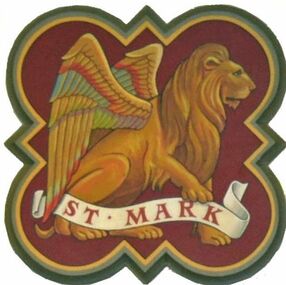This week we are concluding our study of the Gospel of Mark by looking at Mark’s Passion Narrative. Please read Mark 14:1-16:8 and Johnson pp. 177-179.
One of the pericopes we will focus on this week is Mark’s version of the Last Supper. In Mark’s rendition, he brings to fruition various foreshadowings within his Gospel and brings forward the messianic expectations found in the Hebrew Scriptures. Mark, of course, writes his Gospel with knowledge of the Last Supper and its place within the Christian community. See, 1 Cor. 11:22-34. Throughout his Gospel, he gives us hints of what is to come. In the feeding of the multitudes in Mark 6:30-44 and 8:1-10 we have a hint of the Eucharist (where both Jew and Gentile are invited) although as Jesus points out in Mark 8:31 the disciples don’t yet understand the implications. Mark also shows us the meaning of the cup in Jesus’ discussions with James and John and in his prayer in Gethsemane in Mark 10:35-45 and 14:32-36. I have attached an excerpt from Jerome Kodell’s book The Eucharist in the New Testament for a more in-depth discussion of this foreshadowing
Additionally, Mark’s presentation of the Last Supper brings to fruition the eschatology of the Hebrew Scriptures. Historically, the Mosaic Covenant at Sinai was sealed with the “blood of the covenant” whereby Moses took the blood of the sacrificial animals and threw one-half on the altar and the other half on the people. Ex. 24:1-8. As the Hebrew Scriptures developed, this event was seen not only as history but also looked forward to a future liberator at the end times. For example, Mark draws on this messianic prophecy of Zechariah 9:9-18. This oracle of Zechariah begins with the coming king riding into Jerusalem on a colt (Zech. 9:9, Mark 11:7) and continues with that king setting the captives free through this same “blood of the covenant” present at Sinai. (Zech. 9:11, Mark 14:24). Likewise, the words of the Last Supper draw upon the apocalyptic symbol of the “cup” as found in Isaiah 51:17-23, Jeremiah 25:15, and Psalm 116:13. Mark’s narrative also tracks closely to the prophecy of the “decedent of Judah” to whom the scepter belongs. Gen. 49:8-12. If you have an opportunity this weekend, please read through these prophetic messianic expectations and how they became present in the Last Supper.
Dinner is at 6. The menu is pizza. Discussion about 6:45. Hope to see you here.
And this food is called among us the Eucharist, of which no one is allowed to partake but the man who believes that the things which we teach are true, and who has been washed with the washing that is for the remission of sins, and unto regeneration, and who is so living as Christ has enjoined. For not as common bread and common drink do we receive these; but in like manner as Jesus Christ our Saviour, having been made flesh by the Word of God, had both flesh and blood for our salvation, so likewise have we been taught that the food which is blessed by the prayer of His word, and from which our blood and flesh by transmutation are nourished, is the flesh and blood of that Jesus who was made flesh.
Justin’s Apology (c.150 AD)

